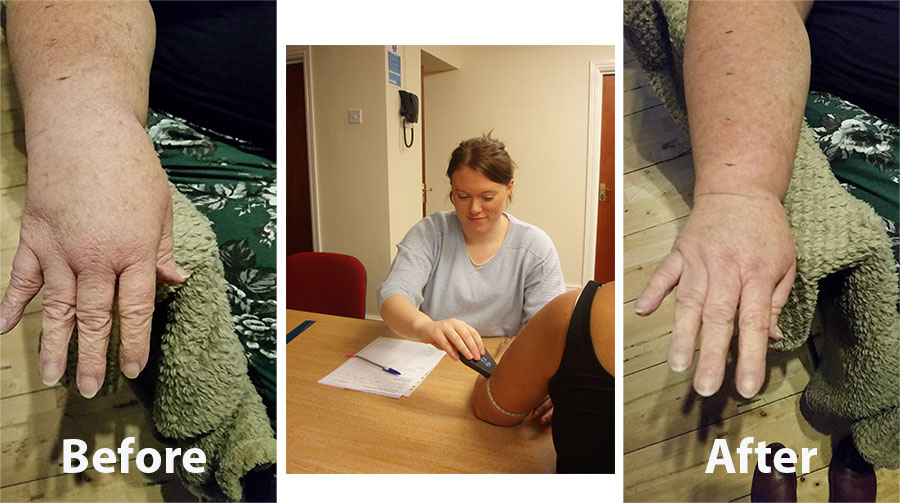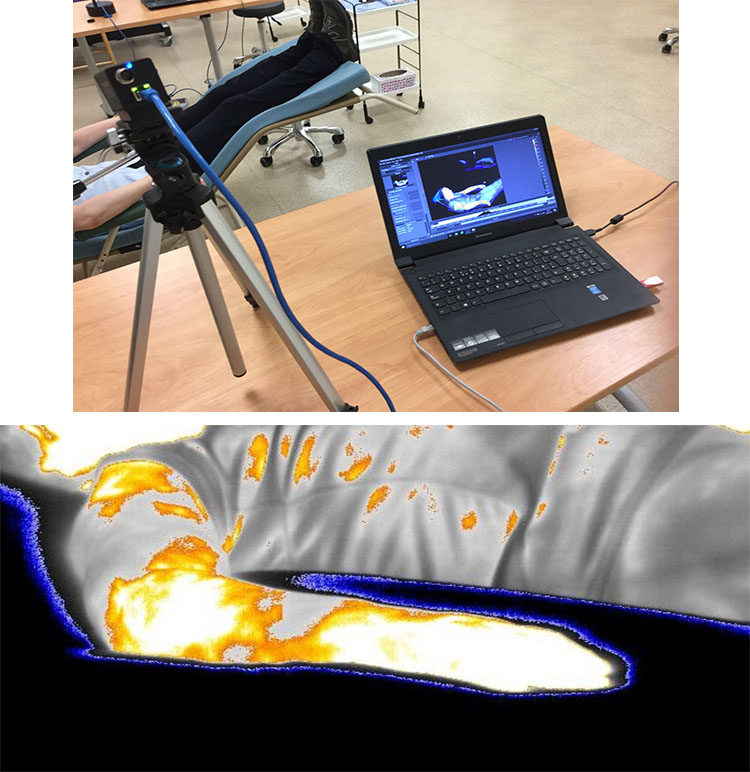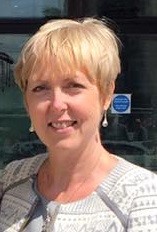The use of complementary and alternative medicine as an adjunct to standard medical care is commonplace. One of the most commonly used forms of complementary therapy is reflexology. It is a therapeutic modality based on the theory that areas of the feet correspond to discrete areas of the body. A standard treatment typically involves applying pressure to specific areas on the feet using thumb, finger and hand techniques. This pressure is thought to invoke a relaxation effect, improve blood flow and facilitate a rebalancing of physiological processes.
There is some evidence that reflexology may have benefit for a range of physical symptoms, including pain, anxiety, sleeplessness, reproductive and digestive disorders.
Cardiff Metropolitan University works with a number of hospices in South Wales to provide therapeutic interventions in palliative care. Lymphoedema after treatment for cancer often responds well to reflexology and other therapies such as manual lymphatic drainage. The reflexology lymphatic drainage technique was developed by an undergraduate student whilst on placement at a local hospice, and further research was built upon her initial results.
Research Areas
Use of Reflexology Lymphatic Drainage (RLD) in Breast Cancer Related Lymphoedema
Reflexology is one of the most commonly used complementary therapies in cancer care. The original project was set up to explore the use of a particular technique of reflexology in people with swelling of the arm as a result of surgery for breast cancer.
The specialised technique of reflexology called ‘Reflexology Lymphatic Drainage or RLD’ was developed in response to a clinical need for a less invasive treatment for the condition. Current treatment modalities include the wearing of a compression sleeves to contain the swelling, or manual lymphatic drainage which is not widely available.
26 women who had undergone breast surgery and axillary node clearance, and who had then experienced swelling in one arm, were recruited from three areas of South Wales. For two weeks, they had both their arms measured and compared, and for the following four weeks they were given RLD. Their arms were measured before and after each of these reflexology sessions, followed by a week of measurement without treatment. They were asked about their main concerns, and a short interview was conducted asking them about their experiences of lymphoedema and how taking part in the study had impacted on them.
Outcomes of the first Project.
When the volumes of the participants’ normal arms were compared with their swollen arms, the data showed that all 26 participants (100%) who took part in the study had reductions in size of their swollen arm. Those with the largest amount of swelling tended to lose the most fluid from the affected arm. The largest loss of fluid occurred after the first reflexology session, with further smaller losses at treatments 2, 3, and 4. The loss of fluid was maintained up to 6 months later. Participants commented on a range of positive benefits, both physical and psychological.
(Whatley et al., 2016, Whatley et al., 2018).

Follow up project exploring temperature changes.
Participants in this patient group who have received RLD treatment often comment that they can feel fluid movement in their arm and other areas, because there is a change in temperature. The second project used a thermal imaging camera to explore fluid movement in real time, i.e. during the RLD treatment session. Two participants with BCRL were invited to receive treatment and have their arms thermally photographed at the same time. The photographs show clear differences in temperature as fluid moved from arm to abdomen. Volume measurements were taken as before and similarly indicated a fluid loss of around a third.

Further follow up project comparing RLD to standard reflexology.
Participants with BCRL were invited to take part in a comparative study where one group was given RLD and the other was given standard reflexology which involves relaxation but no targeted lymphatic treatment. Participants were blinded to their allocated group. Results from the RLD group appear more speedy than the standard reflexology group. Thermal images were also taken in this study. Data analysis phase is ongoing.
Use of reflexology on constipation in hospice patients using Opioids
A KESS funded Masters project is currently exploring the use of reflexology on constipation in hospice patients using Opioids.
Effects of reflexology on circulation
A study is currently exploring the effects of reflexology on circulation, with a view to improving peripheral blood flow in patients with peripheral arterial disease.
Group Members
 | | |
Research Lead and
Senior Lecturer in Complementary Healthcare | | |
Collaborators
Internal
Judith Whatley - Reflexology Practitioner and Senior Lecturer at Cardiff Metropolitan University.
External
Sally Kay - Reflexology Practitioner and provider of specialist RLD training.
Funding
Tenovus Innovation Grant
Motonovo Charitable donation
Simon Fieldhouse Charitable Donation
Key Publications
Whatley, J., Street, R. and Kay, S. (2018) 'Experiences of breast cancer related lymphoedema and the use of reflexology for managing swelling: A qualitative study',
Complementary Therapies in Clinical Practice, 32, pp. 123-129.
Whatley, J., Street, R., Kay, S. and Harris, P. (2016) 'Use of reflexology in managing secondary lymphoedema for patients affected by treatments for breast cancer: a feasibility study ',
Complementary Therapies in Clinical Practice, 23, pp. 1-8.
